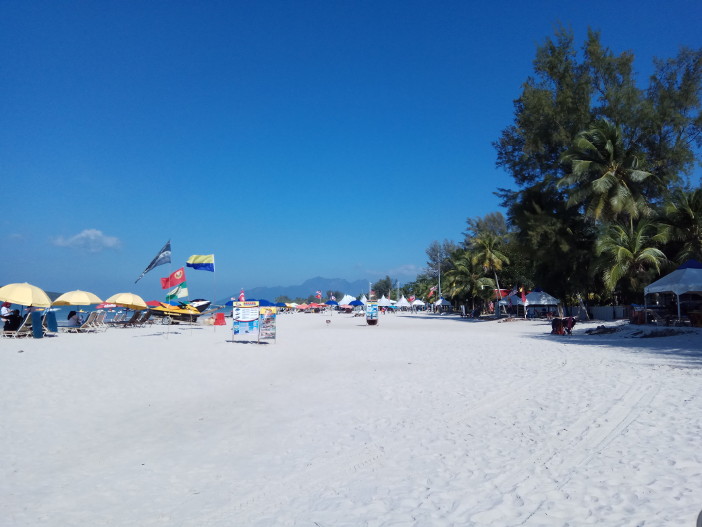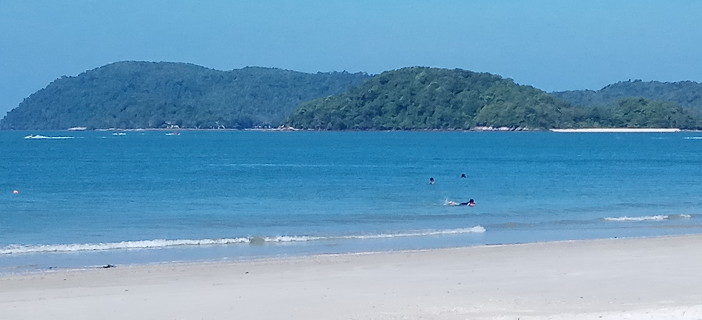After a few days in KL, we headed for the island of Langkawi for some rest and recuperation, at the end of a long 2017. Langkawi lies off the west coast of the Malay peninsula, close to Thailand, in the Andaman Sea. Until the 1980s it was an undeveloped backwater, but then the government scrapped all duty taxes there. The aim was to kickstart tourism, and the move was wildly successful. The island is now buzzing not only with tourists but also with mainlanders coming over to shop for bargains.
The airport is still fairly small, and flights are mostly local. We opted to travel through KL as we wanted to see the capital too, but there are direct flights to Langkawi from Guangzhou, and that may be a quicker route from Beijing. It’s a dramatic arrival, with the plane descending over the sea, and you can almost see the holidaymakers on the beaches below.
(A low budget alternative is to take the bus and the ferry from KL, but we decided that was a step too far even for our travel-hardened and long suffering kids.)
There are two main settlements in Langkawi. The capital Kuah is a small town, with not much to recommend it to visitors. We went there to check out the Langkawi Parade “Megamall”, but it’s small and dingy by Chinese standards, and not really worth the trip.
Better shopping is available in the duty-free stores of Pantai Cenang, which is the main tourist town. (“Pantai” means “beach” in Malay.) The main drag along the seafront is packed with shops, restaurants and “tourist information” offices selling activities and excursions.
Beyond Pantai Cenang are many smaller beaches and self-contained holiday resorts. There’s not much in the way of public transport on Langkawi; taxis are cheap if you can find one, but most people rent scooters or cars to get around. Make sure you have your driving license with you! Police checkpoints are common. And remember you’re no longer in China – they drive on the left, and seatbelts are compulsory!

The beach at Pantai Cenang
The beaches are wonderful, with soft sand and gentle waves, but you need to be careful of jellyfish (more on this later). Because of its location sheltered by the mainland, there is no real rainy season in Langkawi. When we visited, at the end of December, there were a few days of heavy rainfall, but for the most part glorious sunshine. The hottest part of the day, we discovered, is not around midday as we expected, but from 2 to 4 in the afternoon. Most parents will want to keep their kids out of the sun during this scorching period.
Although the coasts are developed, much of inland Langkawi is still virgin rainforest. In my next post, I’ll write about some of the wildlife you can expect to see there.
Photos: Andrew Killeen




